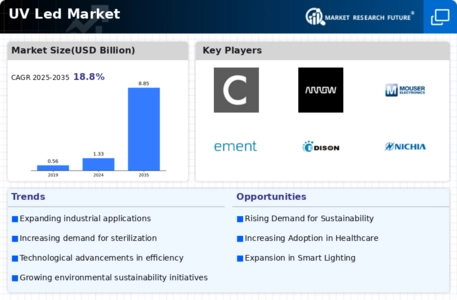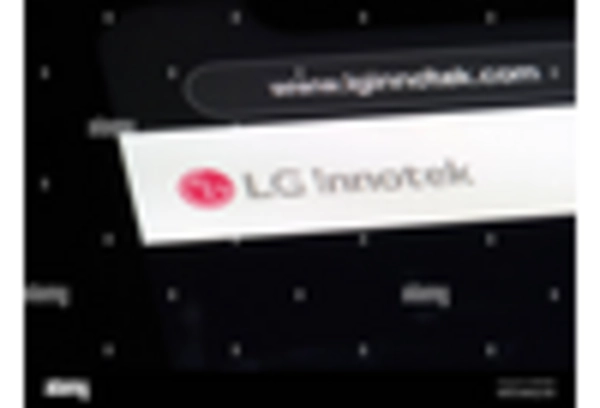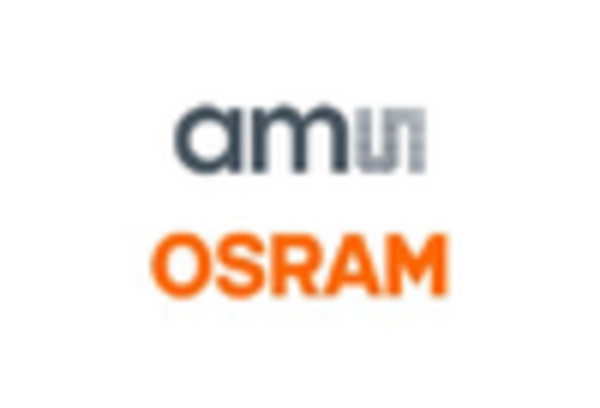Advancements in UV LED Technology
Technological advancements are playing a pivotal role in shaping the UV Led Market. Innovations in UV LED design and manufacturing processes have led to improved performance, efficiency, and cost-effectiveness. For instance, the development of high-power UV LEDs has expanded their applicability across various sectors, including curing, printing, and sterilization. As manufacturers continue to invest in research and development, the market is likely to see enhanced product offerings that meet diverse consumer needs. This ongoing evolution in technology is expected to propel the UV Led Market forward, as businesses seek to leverage the latest advancements for competitive advantage.
Growing Applications in Water Treatment
The UV Led Market is witnessing a substantial increase in applications related to water treatment. With rising concerns over water quality and safety, UV LEDs are being adopted for disinfection processes in various sectors, including municipal water treatment and industrial applications. The effectiveness of UV LEDs in eliminating pathogens without the use of chemicals is a compelling advantage. Recent estimates suggest that the water treatment segment could account for a significant portion of the UV Led Market, potentially reaching a valuation of several billion dollars in the coming years. This trend underscores the critical role of UV LEDs in ensuring safe drinking water.
Rising Demand for Energy-Efficient Solutions
The UV Led Market is experiencing a notable surge in demand for energy-efficient lighting solutions. As energy costs continue to rise, consumers and businesses alike are seeking alternatives that not only reduce energy consumption but also lower operational costs. UV LEDs, known for their low power requirements and long lifespan, are becoming increasingly attractive. According to recent data, the energy efficiency of UV LEDs can be up to 80% higher than traditional lighting options. This shift towards energy-efficient solutions is likely to drive significant growth in the UV Led Market, as stakeholders prioritize sustainability and cost-effectiveness in their purchasing decisions.
Increased Regulatory Support for UV Technologies
The UV Led Market is benefiting from increased regulatory support aimed at promoting the use of UV technologies. Governments and regulatory bodies are recognizing the environmental and health benefits associated with UV disinfection and sterilization methods. As a result, there is a growing trend towards establishing standards and guidelines that encourage the adoption of UV LEDs in various applications. This regulatory backing is likely to enhance market confidence and stimulate investment in UV LED technologies. Consequently, the UV Led Market may experience accelerated growth as stakeholders align with these supportive policies and frameworks.
Expansion of the Electronics and Semiconductor Sector
The UV Led Market is closely linked to the expansion of the electronics and semiconductor sector. As the demand for advanced electronic devices continues to rise, the need for efficient UV curing processes in manufacturing is becoming increasingly apparent. UV LEDs are utilized in the production of semiconductors, printed circuit boards, and other electronic components, providing rapid curing times and high precision. Recent projections indicate that the electronics sector could significantly contribute to the growth of the UV Led Market, as manufacturers seek to enhance production efficiency and product quality through the adoption of UV LED technologies.
















Leave a Comment